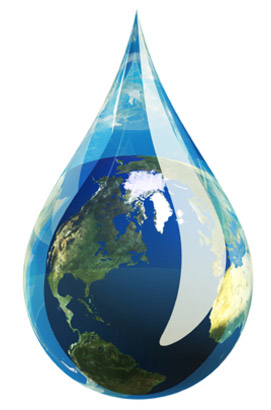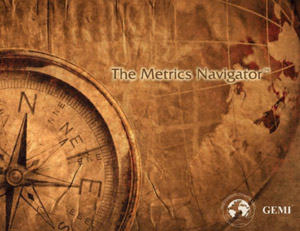GEMI’s Solutions-Based Sustainability Tools
In 1990 a group of corporate environmental leaders from The Business Roundtable recognized the need for corporate environmental leadership around the world. They had a vision that a wide array of business sectors could work together, learn from each other, share what they learned, improve the environment and the way their companies operated around the world while increasing the value of their businesses. Their vision led to the creation of the Global Environmental Management Initiative (GEMI), www.gemi.org. In the early years of the environmental movement, environmental legislation was increasing and many non-governmental organizations (NGOs) were pursuing agendas, which would mandate codes of conduct for corporate environmental activities. Companies were looking for a way to proactively manage these environmental expectations. Early GEMI leaders knew that no group was better positioned and capable of outlining the most effective ways for business to address environmental, health and safety (EHS) issues than the companies themselves.
Since 1990 GEMI has captured the vision and experience of global corporate EHS and sustainability leaders from diverse business sectors through the development of a wide range of more than 30 publicly available, solutions-based tools. The latter are designed to help companies and organizations improve the environment, their operations and add business value. As a result, GEMI is a global leader in developing insights and in creating environmental sustainability solutions for business and organizations. GEMI currently has 26 member companies representing more than 12 business sectors, all of which bring unique insights to the discussion of common challenges posed in environmental management. The organization does not advocate or lobby on policy issues. Rather, GEMI is designed as a member-driven, “sweat equity” organization, which identifies tools that need to be created, develops them with member leadership and then shares them freely with the world.
Signature Issues & Solution Tools
GEMI’s signature topic areas for its work group activities and solution tools development currently include: water sustainability, sustainable development, supply chain, climate change and management systems. While many users recognize the value of implementing GEMI solution tools, some find they sometimes do not know which one would meet their needs and, therefore, become overwhelmed by the library of tools. In response to such feedback, the organization created the GEMI Solution Tools Matrix™, which is an interactive, web solution to access the publicly available tools. A Guided Discovery process contains a set of seven introductory questions to guide the user to the most relevant tool based on their responses. All GEMI solution tools are for self-assessment; they do not set standards, expectations or mandates for companies to meet. Throughout the GEMI library of tools hundreds of company case examples focus on the topic addressed per the specific tool.

© iStockphoto.com/MrIncredible
GEMI Local Water Tool™ (LWT). GEMI recently launched a new tool, GEMI Local Water Tool™ (LWT) and the GEMI LWT™ for Oil and Gas, developed by a group of 42 companies, most with global operations. It is designed to help companies and organizations identify external impacts, business risks and opportunities related to water use and discharge at a specific site or operation. The objective is to help better understand use and utilization of water and to provide a comprehensive way to evaluate key water issues in communities or regions of operation. As a result, companies are better informed and can develop proactive management strategies regarding potential issues arising from their impact or potential impact on local or regional watersheds. We are very pleased and appreciative that the World Business Council for Sustainable Development (WBCSD) and IPIECA, the global oil and gas industry association for environmental and social issues, collaborated in development of these tools.
GEMI LWT™ was developed in cooperation with the WBCSD to link to the WBCSD Global Water Tool© (GWT) and the IPIECA to link to the IPIECA GWT for Oil and Gas and provide a set of tools that companies and organizations can use to sustainably manage water in their operations. These tools are designed to be compatible to enable users to achieve full value from use of both tools. The GEMI LWT™ is a Microsoft Excel-based tool requiring Microsoft Excel 2007 or newer versions. The user downloads the tool for use on their own computer, and, therefore, GEMI has no access to user data. The user is guided through six modules to collect internal and external information. Each GEMI LWT™ user will need to take the necessary steps to ensure data accuracy as GEMI does not ensure the accuracy of an entity’s data.
GEMI LWT™
- helps companies and organizations assess external impacts, business risks, opportunities and manage water-related issues at specific sites,
- provides a common and consistent visualization platform for internal and external communication,
- provides interconnectivity between global and local water risk assessments and a uniform approach between site assessments and
- provides a central repository of information to create reports for internal and external stakeholders.
GEMI LWT™ has been publically available since March 2012. GEMI anticipates that, in time, it will be identifying company specific examples and case studies showing how the tool has been utilized. GEMI LWT™ is the only tool addressing water management issues purely from the user’s perspective (e.g., a company) in order to better understand external impacts, business risks and opportunities at a specific site. Once a company has fully utilized this tool, it will be in a better position to understand and to create corporate or entity strategies addressing challenges, constraints and limitations relating to data availability and geographic coverage.
GEMI LWT™ was not designed to “create new innovations.” It provides companies and organizations information that may lead to development of technologies and innovations to enhance and support its activities in a given area or watershed. The tool is a comprehensive, systematic and consistent methodology to evaluate issues at a site level. Additionally, several GEMI members believe it may also prove useful in assessing new facility locations and in mergers and acquisitions.
Collaboration with Stakeholders
GEMI has historically reached out to a wide range of organizations in tool development through its External Advisory Group (EAG) comprised of topic experts and NGOs. Each EAG is assembled to address the specific project area. Through the years, GEMI has created a different EAG for development of

Image Courtesy of GEMI
Transparency: A Path to Public Trust, The GEMI Metrics Navigator™ and GEMI LWT™. GEMI has also worked in partnership with the Environmental Defense Fund (EDF) to create the GEMI-Environmental Defense Fund (EDF): Guide to Successful Corporate-NGO Partnerships, which is a comprehensive aid to organizing, designing, implementing and measuring the success of corporate-NGO partnerships. The Guide also includes several case examples of successful partnerships. While the focus is on environmental projects, GEMI feels the lessons learned can apply to any type of sustainability-driven partnership involving active engagement between businesses and NGOs.
GEMI was pleased that several organizations agreed to review and pilot the GEMI LWT™ before it became public. A list of these organizations may be found on the tool’s web page in the “About” section.
The Bottom Line
Significant progress has been made to help companies better understand the risks, challenges and opportunities they face when operating, or hoping to operate, in countries where water resources are stressed or scarce. Addressing global issues on a daily basis is not an easy task. These companies need a corporate commitment and a sophisticated staff to better understand the sustainability challenges and opportunities they will face. In this way, strategic and tactical approaches can be developed, which will be in the best interest of the companies, their stakeholders and the local communities.
By working together and learning from each other, GEMI members are continually finding new ways to do their jobs better and in a way that provides value to their companies and the environment. Through lessons learned, GEMI has developed a library of environmental sustainability solution tools that companies, government agencies, organizations and others around the world can use to become leaders who strive to achieve economic prosperity while protecting the environment.
For more information about GEMI, please visit: www.gemi.org.





























